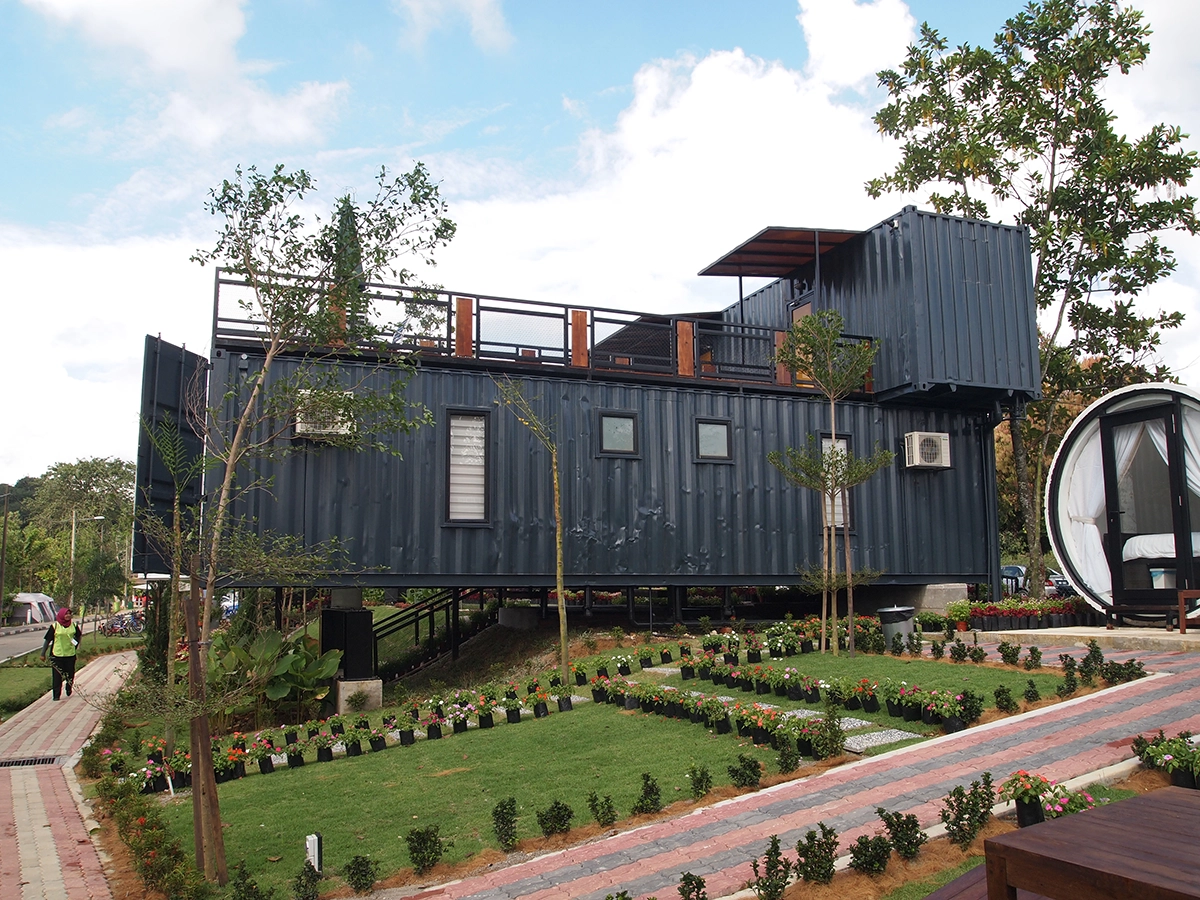How to Build a Shipping Container Home Step By Step
One of the new trends in building a house is container houses. Sounds pretty cool and also saves money, the container has a great structure for house building. You can also build your container home with several containers so you can get more rooms. Start with a three-room container home (which requires three containers normally) if you are new to this project, make it safe and steady. You can add more rooms anytime you want. Follow this guide, I will show you how to build a container home step by step. Really nothing complicated, only your passion and patience are needed. You can make your home like me in several steps.
Step 1 – Make your plan
Nothing can be done without planning. So the first step is to make your home plan, including home design, budget, and location. Next, make sure the house is legal to build on your land (Don’t miss this step). Every country has different regulations and laws, so it is best to check the rules online or asks a local professional opinion.
If you are building a container home, make sure you have prepared $110/m² for the budget. That’s a rough price; you can calculate the specific shipping container home cost according to your local conditions. Most importantly, work out the space you want or need. Because the space you need will determine the number of containers you need. The standard container dimensions are 8’’x20’’ and 8’’x40’’. You normally need 3-4 of them to build a house. If you don’t want to get things complicated, you can line three 8’’x20 containers up. You can use Google SketchUp to draw your design if you want to make a special design. Don’t limit your imagination. This is a great tool and easy to use.
Step 2 – Buy Your Containers
There are many ways you can get a container. First, you can buy it from your local place, including used containers. If you buy from the local market, especially for a second-hand container, ensure you have inspected it with your own eyes. If you don’t know how they have used it before, check it and make sure your container is perfect and in good shape.
Another good plan is to buy your container from China, and you can buy your containers at Alibaba for new containers. This is a reliable platform I use a lot to import products from China. Make sure you have inquired about several suppliers and compared the price. Don’t jump to the cheapest supplier too quickly, and the risk is too high. Besides, I will not buy the most expensive one either. If you buy from China, it will take about 3-4 months to receive the products, so make your plan ahead of time.
Step 3 – Find an engineer.
If you are considering making some special container placement or making big modifications to your container, you must consult an engineer. Removing the structural components of a shipping container without reinforcing them may cause the container to be dangerous and unstable. Removing walls from a shipping container will severely weaken the container structure, and you need some steel beams to be welded into the container to make it safe and durable. Don’t get lazy; consult an engineer, and you will get a safe house. In addition, we have other steps that require the help of a qualified engineer; this is a step you can’t miss.
Step 4 – Building Foundations
When building a shipping container home, you need a base where the shipping container can be placed in. The foundation of a container home is various, but there are two leading factors you should consider, your budget and the environment. You don’t want some foundation that costs too much money, nor want a foundation that unfits your land condition, which may cause your whole project to fail.
I will not dig too deep into this issue; this is one of the few problems you need professional help with. You have found an engineer now. Judging the foundation type by yourself is too risky; let professional people work on professional problems. Nevertheless, I will give you a rough idea about this. There are three main foundations:
- Concrete Piers is the simplest and cheapest shallow foundation to go
- Slab-on Grade foundations are more expensive and are suitable for softer soil types.
- Pile Foundation is the most expensive foundation used when the soil type is too weak.
I think that would be enough for you; you don’t need to cost too much time on it if you have an engineer, you have a lot of other work to do.
Step 5 – Connect Your Shipping Containers
Before you connect your containers, you need a crane to place our containers, and this is the easiest way to do this. You can rent a crane from the builders, and this is easy and fast. There are many ways to connect shipping containers, including bolts, clamps, and welding. But I don’t approve of the bolts and clamps unless you need to move your container home often, but what’s the point is moving your home often? Not to mention you have already made the foundation. Welding is the most secure and safe way to connect your containers. It is not too difficult for someone who has never used it. But still, you can call for help from your friends and relatives or even hire someone to do this work for you. It all depends on you. Also, I must remind you that if you have not welded before, the welds will not look good. So let somebody else do the job for you if you are unwilling to take the risk.
Step 6 – Reinforce Your Containers
This step needs to be done before removing any components from your containers. also, start it before your roof building. Don’t make the wrong order, or you may face danger. I have no suggestions for the reinforcement methods because you need a qualified engineer or builder. This is highly recommended, and you had better follow your engineer. Normally you need steel to reinforce, but how to reinforce it requires a professional opinion, so I will leave this part to your engineer.
Step 7 – Do some cuttings.
Before this step, you may need a roof if you like. This is not necessary and guides for it. You can build any roof you like. Most people build a roof for appearance, you can build a wood roof if you like.
After reinforcing work, removing is safe now. Also, removing is not necessary, only if you want a window or a door between the container rooms. There are many ways to cut your windows and doors, including a plasma cutter, torch, grinder, and jigsaw. A plasma cutter can do all the work for you, and it’s clean and neat. If you don’t want to bother, I highly recommend you use a plasma cutter. If you have no experience in this job, please hire someone to do it for you. The cost is not high, and the work will be done in just several hours, so you don’t need to pay them for a long time.
Step 8 – Work on the container plywood floors
Why should I worry about the container floors? Yes, and you have to. The shipping container floors are treated with pesticides to prevent insects during sea transportation. These pesticides could harm human beings. So you should remove the container floors or at least encapsulate them with epoxy and create a building with a sub-floor on top of it. It is cheaper if you don’t do this step, but if you want a peaceful mind, do it. Meanwhile, for new containers that are entirely new, there is no need to do this.
Step 9 – Add doors and windows
After cutting the containers, here goes the door and windows. You can add whatever style of doors and windows you like. Add a wood door frame first, and then you can place your door. Make sure you have the frame fit your door size. The same goes for the windows. It will be lighter and better looking with some windows. For this part, if you can’t handle it alone, you can also call some friends to help or hire someone. Nothing different from standard windows installations, so this is it.
Step 10 – Power it up
After all the work, you can power your container home up now. It will cost you some time to build the power system, but it is worth it and inexpensive. Do the work; the earlier, the better. Because it would be hard for you to wire your container house later when your home is full of furniture and other things, the only difficulty of this part is drilling holes through your thick container walls. You can also bypass the wall and stick the wires around the wall.







